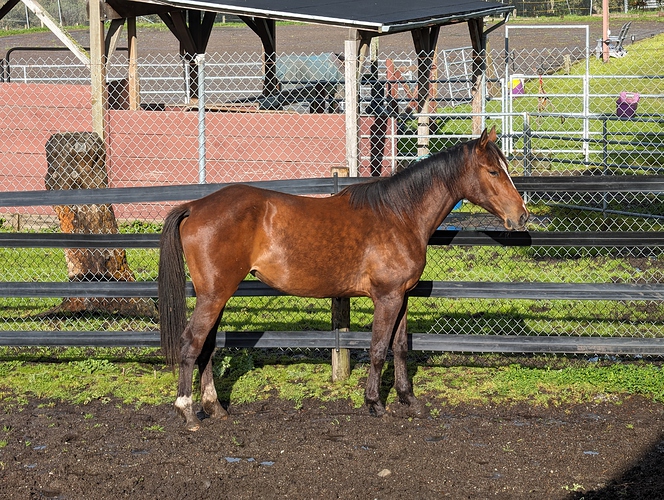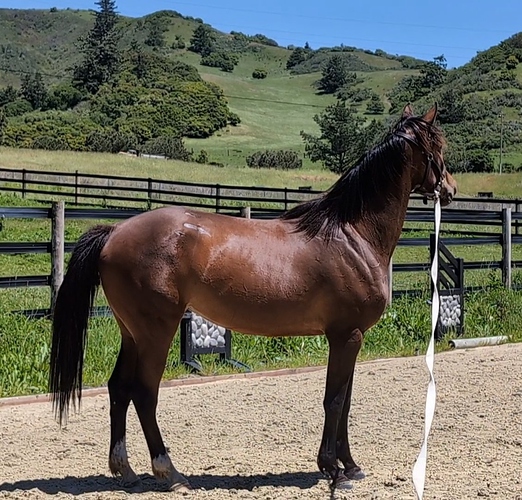Hi all,
I have a coming 2 year old KWPN (currently at 22 months) that came from a smaller group young horse herd situation from the breeder. I had an extensive PPE done prior to purchase in mid December and both vets agreed that he was thin (I of course agreed). He was only being fed 1.5lb of a young horse formula that I’m not familiar with since he came from another country, and free choice, lower quality hay. He was on 24/7 pasture, but the weather conditions where he came from are quite cold, so there was very little grass in the winter.
My issue now is he is still thin and quite ribby and I am looking to slowly add weight and support healthy growth. He has filled out significantly over his hindquarters, has a bit more topline and is growing rapidly (increase in height of over 2in since mid Dec). His coat has drastically improved as well (had a bad case of rain scald since he was unblanketed in harsh weather) I’ve spoke to a veterinarian on this as well as two equine nutrition specialists (one from Tribute and one from Mad Barn) and have had very conflicting advice. I have multiple decades of experience with raising young warmbloods but was looking for any savvy advice given here to help increase weight but not to the point where I am risking ortho or too rapid growth issues.
Current diet:
Free choice grass hay with a very small amount of alfalfa mix in some bales (I’d estimate 10% max mix) and he is turned out for roughly 12 hours a day, Midwest winter has made most of the grass disappear until March or so.
Grain fed daily: total 4lb Tribute Senior Sport Plus (yes, I know this is a senior formula but was recommended due to added fat and nutrients) 2lbs total alfalfa/oat grass pellets, 2oz total camelina oil, 1oz total Wellpride fish oil, 2 scoops Tribute Tough as Nails (for added biotin, nutrients, and aminos) and 1/2 oz Celtic sea salt.
I’m considering adding in a flake of straight alfalfa with his night hay feed, but since his grain has alfalfa in the Tribute Senior (and beet pulp) and the pellets, I am worried about creating a calcium imbalance. Any thoughts on what can be added or changed to help add weight and have a balanced diet for a young horse?





